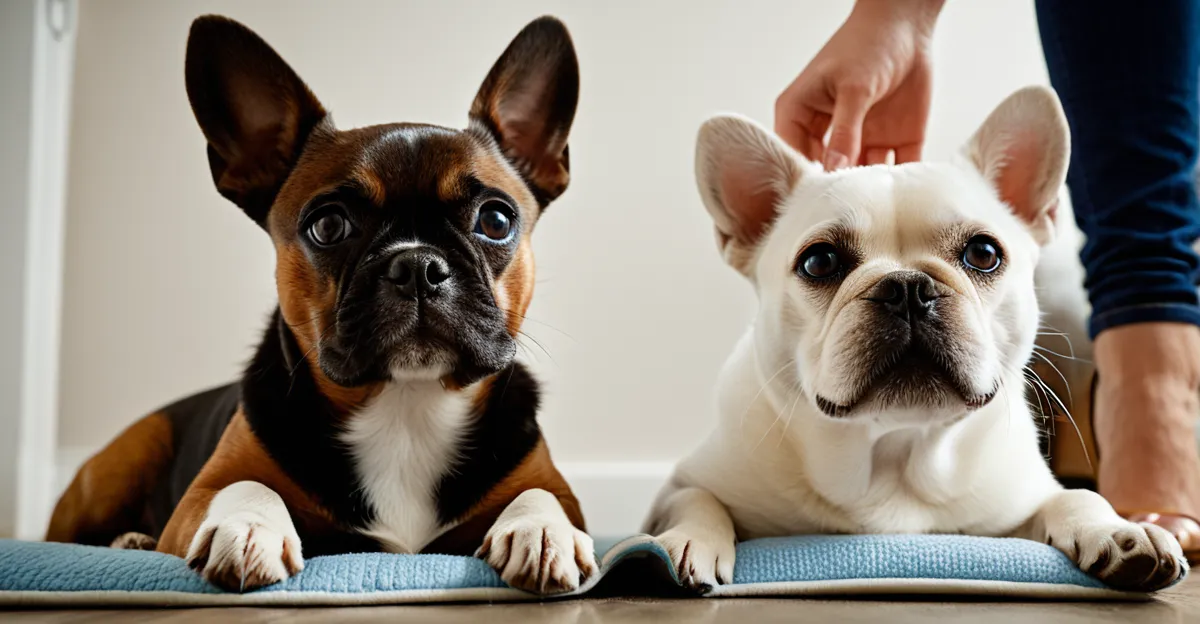Essential Elements for a Pet-Friendly Home
Creating an inviting pet environment in UK pet homes hinges on three main pillars: space, safety, and enrichment. Space is vital—pets require areas tailored to their size and activity levels to ensure pet comfort. For example, indoor pet spaces for dogs often need room to move and trigger natural behaviours like fetching. Cats benefit from vertical space, such as climbing shelves or cat trees, allowing them to explore safely.
Adapting home layouts is essential because different pets have varying needs. A rabbit or guinea pig demands secure, quiet zones separate from noisy household areas. Meanwhile, reptiles require temperature-controlled habitats with humidity considerations suited to the species. In UK climates, temperature control is especially important during colder months, where draft-free, well-insulated spaces help maintain pet well-being.
Topic to read : What are the Latest Trends in UK Pet Ownership?
Safety and enrichment also intertwine; providing stimulating toys and interactive elements reduces stress and behavioural issues. Creating indoor pet spaces with easy-to-clean surfaces supports better hygiene alongside comfort.
By focusing on spatial arrangements, enhancing safety, and addressing climate challenges, pet owners in the UK can cultivate homes where animals thrive. This careful consideration forms the foundation of a truly pet-friendly household.
Also to read : How Can You Determine the Best Companion Pet for Your Lifestyle in the UK?
Safety Measures and Pet-Proofing Your Space
Ensuring pet safety UK is a fundamental step in creating a truly pet-friendly home. Pet-proofing your home involves identifying and minimizing common hazards such as toxic plants, electrical cables, and small objects that pets might swallow. Many household items can pose risks—for instance, cleaning chemicals or unsecured rubbish bins. A thorough sweep of indoor pet spaces to remove or secure these is crucial.
Outdoor areas also require attention. Securing fences and gates prevents pets from escaping and encountering dangers. For pets kept mostly indoors, window and balcony screens can avert falls. These measures not only enhance safety but support pet comfort by providing a stress-free environment.
Understanding relevant UK pet regulations adds another layer of protection. These may include laws on fencing standards or containment for certain animals. Following these regulations helps avoid fines and ensures pets remain safe both inside and outside the home.
Implementing pet-proofing should be tailored to your specific animals. For example, curious cats need high shelves free from hazards, while dogs benefit from chew-resistant materials in their accessible spaces. By combining thorough hazard identification with compliance to UK pet safety guidelines, pet owners can safeguard their animals effectively and maintain secure indoor pet spaces.
Enrichment and Comfort for Different Pets
Creating effective pet enrichment tailored to species vastly improves pet comfort and mental well-being. Dogs thrive with interactive toys that stimulate their minds and encourage physical activity. Regular walks and fetch games support dog comfort by satisfying natural instincts for movement and social interaction. Cats benefit from a well-designed cat environment featuring climbing structures, scratching posts, and hiding spots. Vertical space is essential, mimicking their natural habitat and offering security.
Bird enrichment involves providing toys that encourage beak and claw activity, along with varied perches. Birds also need social engagement, either from human interaction or companion birds, to avoid loneliness and stress. For small mammals, like rabbits and guinea pigs, small animal habitats should include tunnels, chew toys, and quiet resting areas to ensure both stimulation and rest.
Reptile care demands specific environmental controls, such as heat lamps and humidity regulation, alongside enrichment like climbing branches or textured surfaces to explore. Daily routines help all pets feel secure; consistent feeding times and play sessions reduce anxiety across species.
Investing in enrichment tailored to pet type not only promotes health but also deepens the human-animal bond. Ensuring comfort with appropriate resting areas and activities supports behavioural health, reducing stress and destructive tendencies.
Maintaining Hygiene and Cleanliness
Keeping a clean pet environment is vital for both pet comfort and overall health in UK pet homes. Effective pet hygiene involves regular cleaning routines that address fur, dander, and waste in indoor pet spaces. For multi-pet households, daily spot cleaning combined with weekly thorough disinfecting reduces bacteria buildup and odours.
Managing odour control is essential in enclosed UK homes, especially where ventilation may be limited. Using pet-safe air purifiers and deodorisers designed for animal spaces helps maintain fresh air without exposing pets to harmful chemicals. Selecting pet-friendly cleaning products is critical—they must effectively clean yet avoid irritating sensitive skin or respiratory systems common in pets.
Attention to litter trays, cages, and bedding hygiene enhances both pet comfort and prevents the spread of parasites or illness. Regular washing of pet bedding in hot water kills pathogens, while vacuuming pet hair promptly reduces allergens that affect both humans and animals.
A consistent hygiene regime also supports behavioural health. Pets are less likely to develop stress-related behaviours when their spaces feel clean and comfortable. UK pet owners can improve their pets’ quality of life significantly by integrating these practical cleaning and odour control strategies.
Adapting to Small Spaces and Rental Properties
Maximising limited space is crucial for pet comfort in UK pet homes, especially in pet-friendly flats and other rental properties. When space is constrained, inventive solutions can make a significant difference. Creating designated indoor pet spaces with multifunctional furniture or vertical shelves provides pets, especially cats, with climbing and resting options without crowding rooms. Portable pet playpens or foldable enclosures offer temporary safe zones that can be removed easily, respecting landlord preferences and property condition.
For renters, understanding landlord regulations is essential. Some UK rental agreements impose restrictions on pet ownership or alterations to the property. Open communication with landlords helps clarify rules and negotiate pet allowances, which might include agreeing to additional cleaning or damage deposits. This proactive approach prevents conflicts and fosters a pet-friendly rental experience.
Using temporary pet-proofing methods, such as adhesive hooks for gates or corner guards, maintains safety without causing permanent changes. Adapting spaces for animals like rabbits or small rodents might involve modular cages or travel carriers that double as resting spots, optimising space use.
By balancing creative spatial planning with awareness of tenancy rules, pet owners can provide cosy, secure environments within smaller UK homes, ensuring pets enjoy comfort even where space is at a premium.





